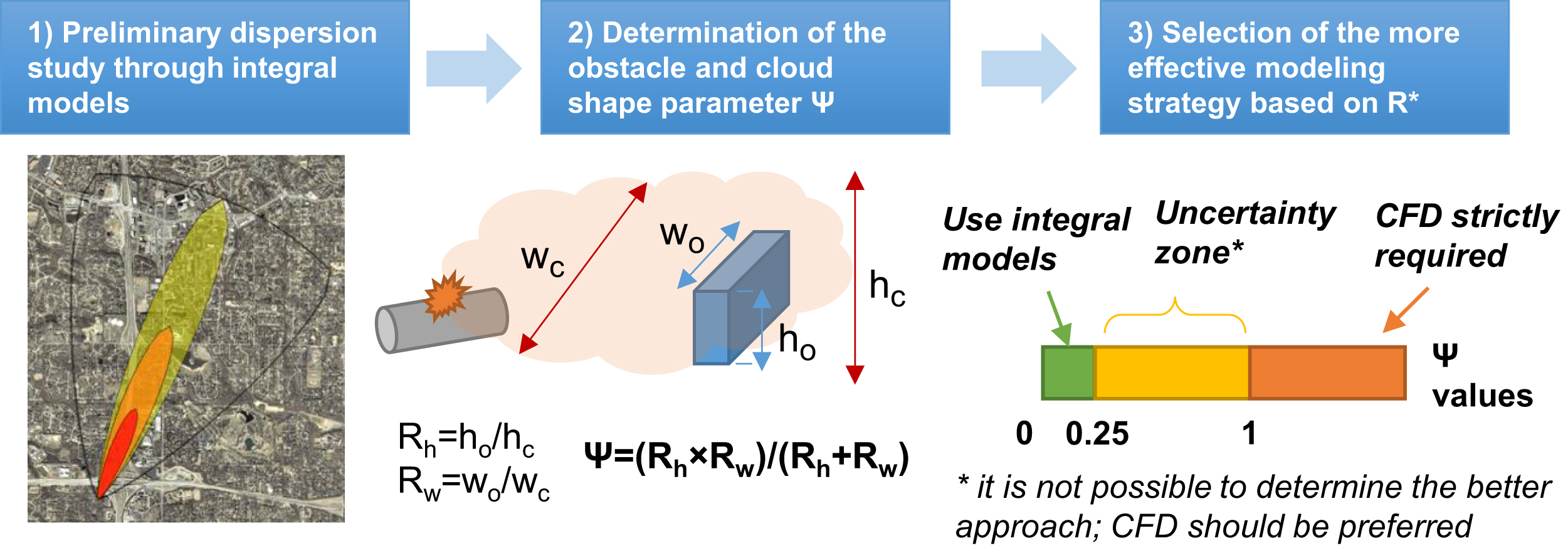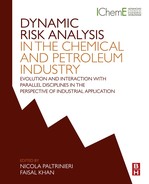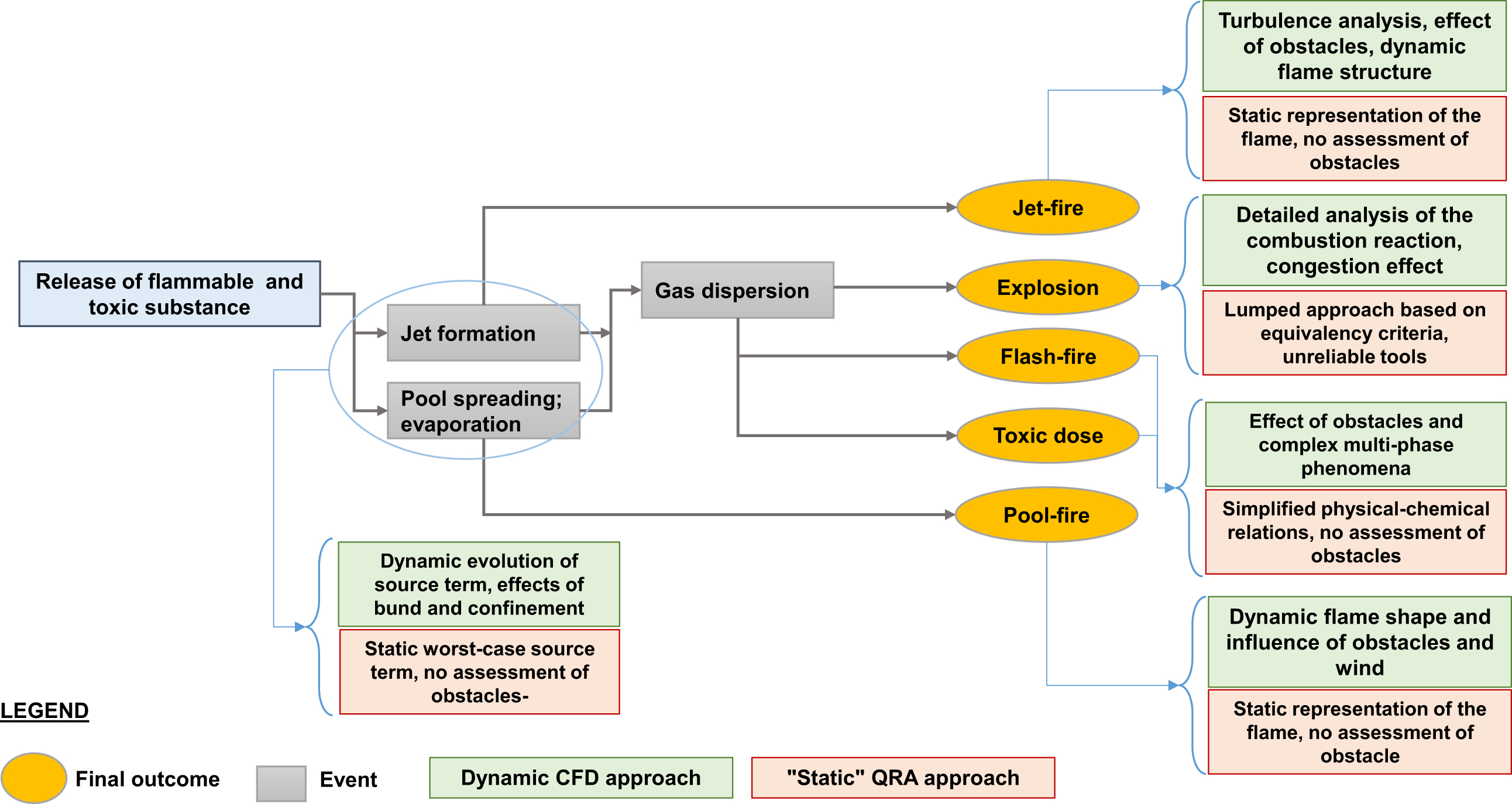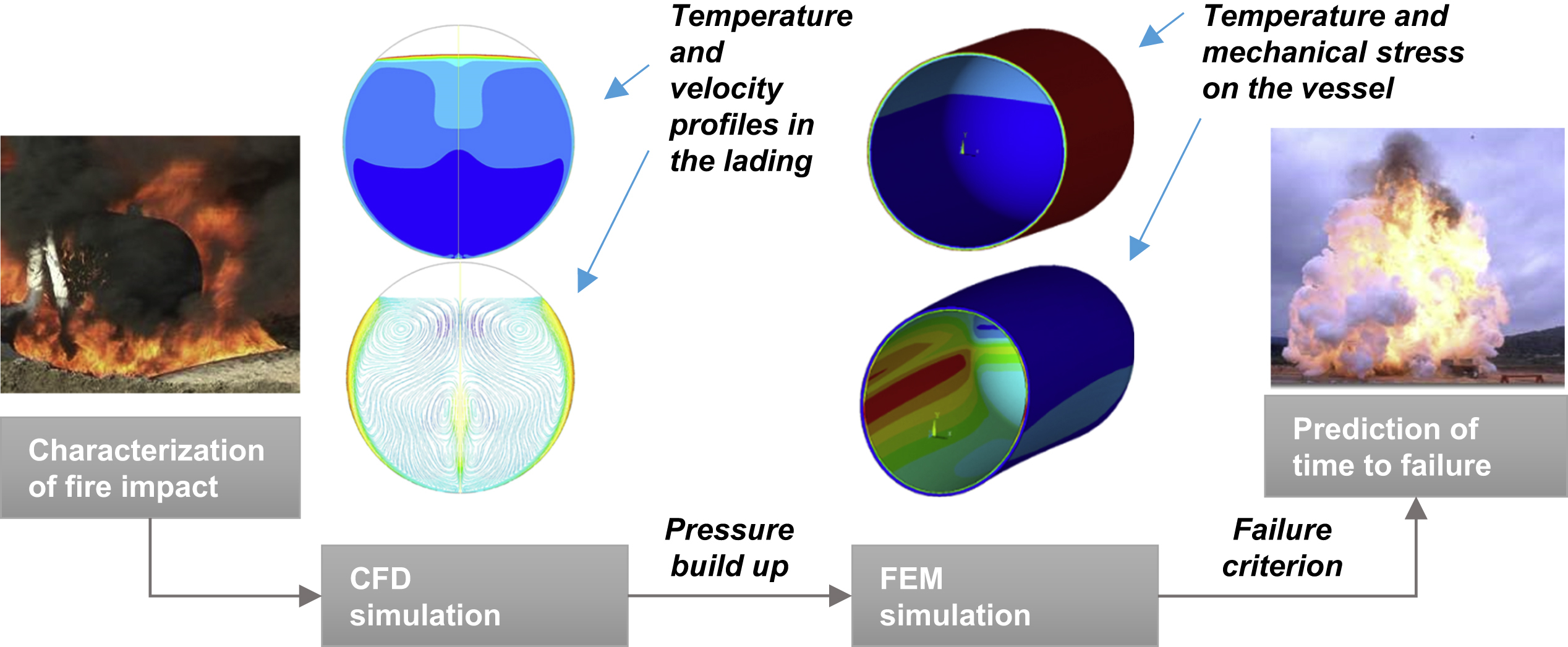[1] Crowl D.A, Louvar J.F. Chemical process safety – fundamentals with applications. 2nd ed. New Jersey: Prentice Hall PTR; 2002.
[2] Abimbola M, Khan F, Khakzad N. Dynamic safety risk analysis of offshore drilling. Journal of Loss Prevention in the Process Industries. 2014;30:74–85. doi: 10.1016/j.jlp.2014.05.002.
[3] Kalantarnia M, Khan F, Hawboldt K. Dynamic risk assessment using failure assessment and Bayesian theory. Journal of Loss Prevention in the Process Industries. 2009;22:600–606. doi: 10.1016/j.jlp.2009.04.006.
[4] Khakzad N, Khan F, Amyotte P. Dynamic risk analysis using bow-tie approach. Reliability Engineering & System Safety. 2012;104:36–44.
[5] Schmidt J. Process and plant safety: applying computational fluid dynamics. Berlin, Germany: Wiley-VCH Verlag; 2012.
[6] Ferziger J.H, Peric M. Computational methods for fluid dynamics. Berlin, Germany: Springer-Verlag; 2002.
[7] Lees F.P. Loss prevention in the process industries. 2nd ed. Oxford: Butterworth - Heinemann; 1996.
[8] Antonioni G, Burkhart S, Burman J, Dejoan A, Fusco A, Gaasbeek R, et al. Comparison of CFD and operational dispersion models in an urban-like environment. Atmospheric Environment. 2012;47:365–372.
[9] Wilkening H, Baraldi D. CFD modelling of accidental hydrogen release from pipelines. International Journal of Hydrogen Energy. 2007;32:2206–2215.
[10] Gant S.E.E, Narasimhamurthy V.D.D, Skjold T, Jamois D, Proust C. Evaluation of multi-phase atmospheric dispersion models for application to Carbon Capture and Storage. Journal of Loss Prevention in the Process Industries. 2014;32:286–298.
[11] Gavelli F, Bullister E, Kytomaa H. Application of CFD (Fluent) to LNG spills into geometrically complex environments. Journal of Hazardous Materials. 2008;159:158–168.
[12] Ichard M, Hansen O.R, Middha P, Willoughby D. CFD computations of liquid hydrogen releases. International Journal of Hydrogen Energy. 2012;37:17380–17389.
[13] Sully A, Heitsch M, Baraldi D, Wilkening H. Numerical simulations of hydrogen and hydrogen chloride releases in a nuclear hydrogen production facility. International Journal of Hydrogen Energy. 2011;36:1083–1093.
[14] Luketa-Hanlin A, Koopman R.P, Ermak D.L. On the application of computational fluid dynamics codes for liquefied natural gas dispersion. Journal of Hazardous Materials. 2007;140:504–517.
[15] Sun B, Utikar R.P, Pareek V.K, Guo K. Computational fluid dynamics analysis of liquefied natural gas dispersion for risk assessment strategies. Journal of Loss Prevention in the Process Industries. 2013;26:117–128.
[16] Pontiggia M, Derudi M, Alba M, Scaioni M, Rota R. Hazardous gas releases in urban areas: assessment of consequences through CFD modelling. Journal of Hazardous Materials. 2010;176:589–596.
[17] Hanna S.R, Hansen O.R, Ichard M, Strimaitis D. CFD model simulation of dispersion from chlorine railcar releases in industrial and urban areas. Atmospheric Environment. 2009;43:262–270.
[18] Pontiggia M, Landucci G, Busini V, Derudi M, Alba M, Scaioni M, et al. CFD model simulation of LPG dispersion in urban areas. Atmospheric Environment. 2011;45:3913–3923.
[19] Landucci G, Tugnoli A, Busini V, Derudi M, Rota R, Cozzani V. The Viareggio LPG accident: lessons learnt. Journal of Loss Prevention in the Process Industries. 2011;24:466–476.
[20] Busini V, Rota R. Influence of the shape of mitigation barriers on heavy gas dispersion. Journal of Loss Prevention in the Process Industries. 2014;29:13–21.
[21] Derudi M, Bovolenta D, Busini V, Rota R. Heavy gas dispersion in presence of large obstacles: selection of modeling tools. Industrial & Engineering Chemistry Research. 2014;53:9303–9310.
[22] Sinai Y.L, Owens M.P. Validation of CFD modelling of unconfined pool fires with cross-wind: flame geometry. Fire Safety Journal. 1995;24:1–34.
[23] Sun B, Guo K. LNG accident dynamic simulation: application for hazardous consequence reduction. Journal of Loss Prevention in the Process Industries. 2013;26:1246–1256.
[24] Wang C.J, Wen J.X, Chen Z.B, Dembele S. Predicting radiative characteristics of hydrogen and hydrogen/methane jet fires using FireFOAM. International Journal of Hydrogen Energy. 2014;39:20560–20569.
[25] Jang C.B, Choi S.-W, Baek J.-B. CFD modeling and fire damage analysis of jet fire on hydrogen pipeline in a pipe rack structure. International Journal of Hydrogen Energy. 2015;40:15760–15772.
[26] Landucci G, Cozzani V, Birk M. Heat radiation effects. In: Domino Eff. Process Ind. Model. Prev. Manag. Amsterdam, The Netherlands: Elsevier; 2013:70–115.
[27] D'Aulisa A, Tugnoli A, Cozzani V, Landucci G, Birk A. CFD modeling of LPG vessels under fire exposure conditions. AIChE Journal. 2014;60:4292–4305.
[28] Landucci G, Molag M, Cozzani V. Modeling the performance of coated LPG tanks engulfed in fires. Journal of Hazardous Materials. 2009;172:447–456.
[29] Lea C.J, Ledin H.S. A review of the state-of-the-art in gas explosion modelling (Report HSL/2002/02). Buxton, UK: Health and Safety Laboratory, Fire and Explosion Group; 2002.
[30] Di Sarli V, Di Benedetto A, Russo G. Sub-grid scale combustion models for large eddy simulation of unsteady premixed flame propagation around obstacles. Journal of Hazardous Materials. 2010;180:71–78.
[31] Hansen O.R, Johnson D.M. Improved far-field blast predictions from fast deflagrations, DDTs and detonations of vapour clouds using FLACS CFD. Journal of Loss Prevention in the Process Industries. 2015;35:293–306.
[32] Landucci G, Salzano E, Taveau J, Spadoni G. Domino effects in the process industries. Elsevier; 2013.




